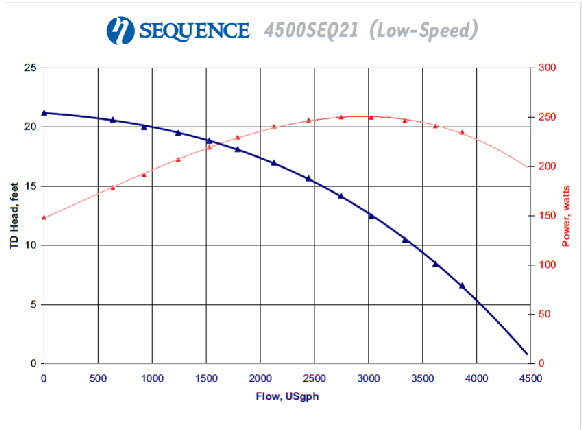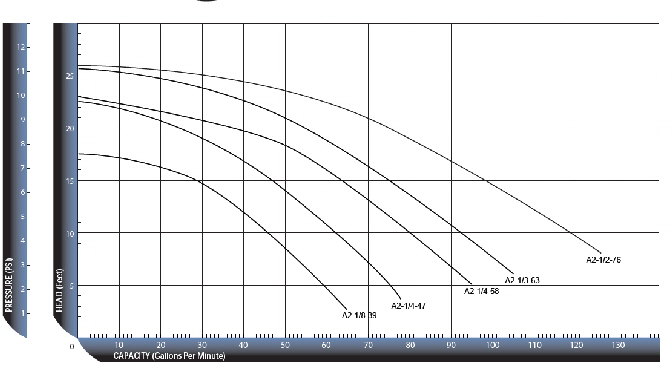|
Once you have designed the filtration systems for you pond, it is time to crunch numbers to see what flow rates your system needs to drive the filtration.
De-nitrification takes 4 hours after the introduction of ammonia into the system. The filtration system should turnover the entire pond volume at least once in 2 hours. We
will do a case study for a pond that has 5000 gallons.
In this case, bottom drain circuit and skimmer circuit must EACH turn over 1250 gallons per hour to achieve 5000 gallon turnover in 2 hours.
Before selecting a pump, one must calculate the Total Dynamic Head in the circuit. A pump may claim to pull or push 1250 gph of water but this is true only when there is
no resistance in the circuit (at zero head). This means the pump is capable of delivering 1250 gallons per hour flow rate if the pump height between the pump inlet and outlet is zero (pump doesn’t have to lift water)
But even a simple filtration circuit has several feet of pipe. Every bend, T or a union, every foot of the length of pipe, every component or filter in the circuit add
resistance or head to the pump’s performance. The friction or resistance is calculated as an equivalent of height in feet that the pump has to lift and is called Dynamic Head. This, in combination with the Static Head (or actual
height that the pump has to lift) is called Total Dynamic Head or TDH.
As TDH increases, pump’s work becomes harder and therefore flow rate decreases. There are online calculators to calculate TDH in a given circuit. Once you calculate the
TDH in your filtration circuit, you can look at the corresponding flow rate for a pump in its flow rate curve.
Let us say the skimmer circuit in our example pond of 5000 gallon has a TDH of 20’ because it uses a bead filter (bead filters add huge heads even when they are clean)
And the bottom drain circuit has a TDH of 15’

Sequence 4500SEQ21 is a popular pond pump, The flow rate curve shows that at 20’ head, the flow rate for this
pump is less than 1000 gph ! So, this pump does not deliver the required 1250 gph flow rate for this pond’s skimmer
circuit. But at 15’ head, it delivers twice the required flow rate i.e. nearly 2500 gph. But the power consumption curve
shows that the wattage required to deliver that flow rate is close to the peak, almost 250 watts. This pump works best when the head is about 17’ because it delivers 1500 gph and consumes 230 watts.
Let us look at the flow rate curve of Artesian 2 pumps

At 15’ head, 1/8hp model delivers 1680 gph. At 20’ head, 1/4hp model delivers 1500 gph.
Performance Pro website also informs that Artesian2 1/8hp model consumes 112 watts at 17’ head and Artesian2
1/4hp model consumes 170 watts at 22ft head. So, Artesian2 1/8hp model seems to be a good choice for the bottom drain circuit of this pond. Artesian2 1/4hp model seems to be a good choice for the skimmer circuit of this pond.
These are not the only companies that make external pumps. There are many more companies that make similar
pumps. Compare the flow rate curves and the wattage consumption to determine the best pump for your pond.
Similarly, ask for “head” and flow rate of every component in your system. Remember to add a valve before every
component to make replacements and repairs easy.
|

